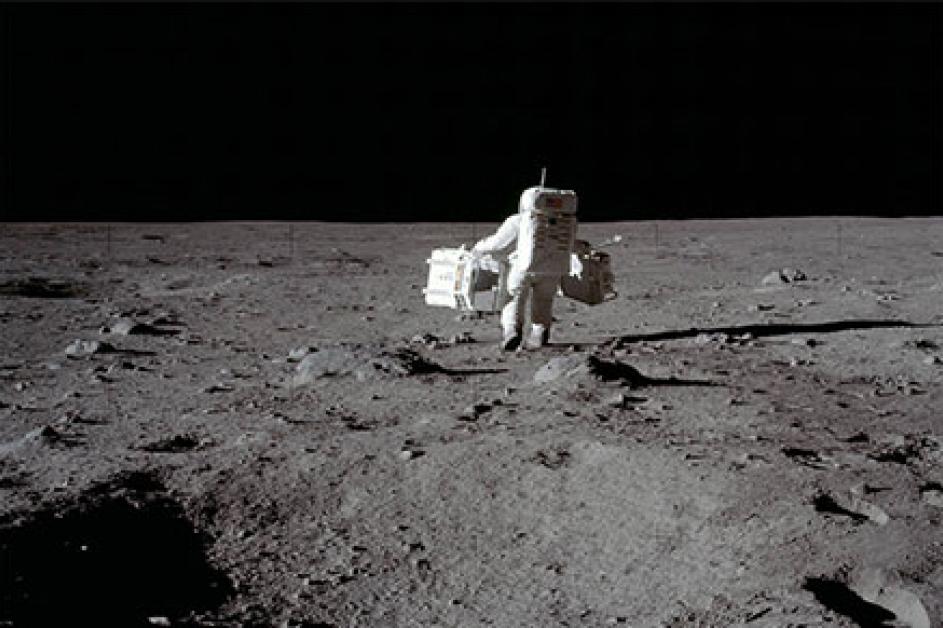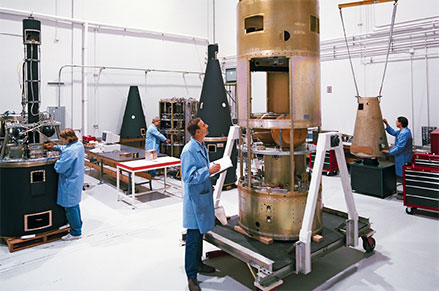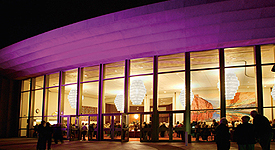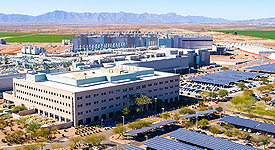
Before two American men stepped foot on the moon on July 20, 1969, they prepared for the famous Apollo 11 mission in Northern Arizona.
When NASA astronauts were training for the remarkable task, they needed to train where the landscapes were similar to the cratered lunar surface.
Before the mission, which is celebrating its 50th anniversary this year, Neil Armstrong and the rest of his crew explored the Grand Canyon, Meteor Crater, and volcanic fields around Arizona to learn geology and practice driving moon buggies on lunar excursions.
Engineers from the U.S. Geological Survey worked with NASA to develop and test instruments and to create detailed maps of the moon that were critical to navigating around the lunar surface. The equipment and maps were often tested at dramatic Arizona landscapes that simulated the moonscape and sometimes featured man-made crater fields created by artists working with the scientists.
* Photo from the first moon landing in 1969. (Courtesy of NASA)
A Major Contribution from a Chandler Company

One company with ties to Chandler played a particularly significant role in the 1969 moon landing mission.
The Grumman Corporation (now part of Northrop Grumman Aerospace Systems, a company with a major presence in Chandler) designed the famous Apollo Lunar Module “Eagle” at its Bethpage, N.Y. facility. This iconic vehicle is best known for carrying Neil Armstrong and Buzz Aldrin to the surface of the moon and then returning them safely to the orbiting Lunar Command and Service Module piloted by Michael Collins.
According to Northrop Grumman, six lunar modules built by the company carried 12 astronauts to and from the surface of the moon between the years 1969 and 1972. In addition to the Eagle Lunar Module (LM), the company also built the Aquarius, famously known for being the lifeboat for three astronauts during the troubled Apollo 13 mission in 1970.
Continuing the Spirit of the Apollo Program

Today, Arizona’s legacy in aerospace exploration lives on in Chandler. Chandler is home to a major Northrop Grumman campus (with a second campus currently under construction) where the company continues its dedication to aerospace technology and keeping the spirit of the Apollo missions alive.
With a local workforce of more than 1,600 people, Northrop Grumman is one of the 10 largest employers in Chandler. The company is a global leader in flight, defense and space systems.
It’s Chandler campus (formerly Orbital ATK, which was acquired by Northrop Grumman and renamed in 2018) is a sector headquarters for flight systems. The company, as a whole, continues to support the development and manufacturing of space launch vehicles and rocket systems.
Learn More About Apollo 11 in Arizona
Visit Chandler Sunset Library, 4930 W. Ray Road, at 10:30 a.m. Saturday, July 27 to continue exploring the moon landing.
This installment of the Our Stories speaker series (titled, “Arizona Goes to the Moon”) takes a look at the 50th anniversary of the first manned mission to the moon and the key role Arizona played in preparing for this and later NASA missions.



